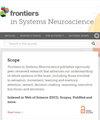基于脉冲神经网络的多感官概念学习框架
IF 3.1
4区 医学
Q2 NEUROSCIENCES
引用次数: 2
摘要
概念学习高度依赖于多感觉整合。在这项研究中,我们提出了一个基于大脑激发的脉冲神经网络的多感官概念学习框架,以创建依赖于概念的听觉、味觉、触觉、嗅觉和视觉感知强度的集成向量。根据不同的假设,在框架中设计了独立合并(IM)和关联合并(AM)两种范式。为了进行测试,我们使用了8个不同的神经模型和3个多感官表征数据集。实验表明,积分向量比非积分向量更接近人类。此外,我们系统地分析了IM和AM范式之间的异同,并验证了我们框架的通用性。本文章由计算机程序翻译,如有差异,请以英文原文为准。
Multisensory Concept Learning Framework Based on Spiking Neural Networks
Concept learning highly depends on multisensory integration. In this study, we propose a multisensory concept learning framework based on brain-inspired spiking neural networks to create integrated vectors relying on the concept's perceptual strength of auditory, gustatory, haptic, olfactory, and visual. With different assumptions, two paradigms: Independent Merge (IM) and Associate Merge (AM) are designed in the framework. For testing, we employed eight distinct neural models and three multisensory representation datasets. The experiments show that integrated vectors are closer to human beings than the non-integrated ones. Furthermore, we systematically analyze the similarities and differences between IM and AM paradigms and validate the generality of our framework.
求助全文
通过发布文献求助,成功后即可免费获取论文全文。
去求助
来源期刊

Frontiers in Systems Neuroscience
Neuroscience-Developmental Neuroscience
CiteScore
6.00
自引率
3.30%
发文量
144
审稿时长
14 weeks
期刊介绍:
Frontiers in Systems Neuroscience publishes rigorously peer-reviewed research that advances our understanding of whole systems of the brain, including those involved in sensation, movement, learning and memory, attention, reward, decision-making, reasoning, executive functions, and emotions.
 求助内容:
求助内容: 应助结果提醒方式:
应助结果提醒方式:


